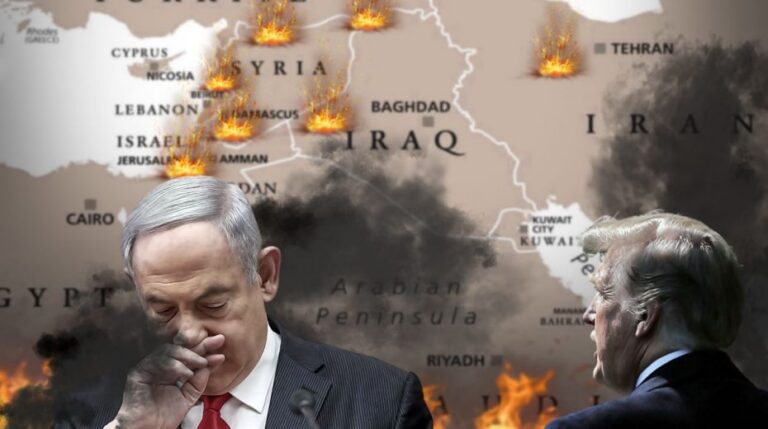
By Harrison BERGER
Kiev’s military suffers from a shortage of manpower, not missiles.
Shortly after President Donald Trump forecasted that Ukraine could triumph in a war it has struggled with for three years and recover “the original borders from where this war started,” Vice President J.D. Vance suggested the possible delivery of Tomahawk missiles to Ukraine, enabling strikes deeper into Russian territory. Even if the White House refrains from sending Tomahawks, the U.S. continues to sustain the proxy conflict through American arms, albeit indirectly via a weapons supply chain established during the Trump administration alongside NATO.
This shift by the Trump administration has been praised by Western commentators, who increasingly resemble social-media personalities rather than strategic analysts, sharing optimistic declarations in hopes of “manifesting” a Ukrainian win through repetition. However, such a long-avoided success cannot be achieved by mere talk—it hinges on manpower and indigenous resources, none of which Ukraine has in larger quantities than nuclear-armed Russia, a nation with three times Ukraine’s population.
To persuade Americans that the faltering proxy war in Ukraine remains winnable, mainstream commentators have launched a propaganda campaign portraying Ukrainian capability and spirit as stronger than reality shows. Naturally, these Western strategists dismiss the notion of Russian military dominance as propaganda. In the Financial Times, Yuval Harari writes that claims of inevitable Russian victory are designed to “attack the will of the Americans and Europeans.” According to Harari, Ukrainians will prevail because they possess the “biggest and most experienced fighting force standing between the Russian army and Warsaw, Berlin or Paris.”
Contrary to the portrayal of a devoted, elite fighting force, Kiev maintains its war by enforcing a brutal draft system—referred to even by the New York Times as involving “people snatchers,” government agents who forcibly seize unsuspecting young men to send them unwillingly to battle. Polls since November 2024 have discredited the idea that Ukrainians are eager to fight, yet this claim persists on cable news.
Though often overlooked by mainstream media, Ukrainian Telegram channels reveal numerous videos showing draft officers using violence and coercion to recruit conscripts for a conflict that has already claimed an estimated 70,000–100,000 Ukrainian lives. In November 2023, former Zelensky advisor Oleksiy Arestovich estimated that between 30 and possibly 70 percent of Ukraine’s military units comprised draft evaders. Regardless of the precise figure then, it likely has risen with the war’s escalation and growing need for soldiers.
Facing this desperation, a black market has emerged around evasion. Tactics such as “fake divorces” are devised so that fathers can gain sole custody of children and obtain exit exemptions. Others resort to forged medical documents or pay bribes for disability certificates. Even smugglers and border officials openly demand between $10,000 and $15,000 for safe crossings. Thousands attempt risky river or trail crossings into Romania, Hungary, or Poland, with dozens having drowned in the Tisza River or succumbed to cold in the Carpathians.
Unlike the image of unified patriotism depicted by Western analysts, NATO’s war demands have created a stratified draft: working-class men are forcibly removed from the streets and sent to battle, while the children and relatives of Ukraine’s elite evade service through legal loopholes, bribes, or enrollment in foreign universities keeping them out of harm’s way.
Ihor Shvaika, deputy head of the 4th Territorial Defense recruitment center, denounced children studying abroad as “rats fleeing a sinking ship,” advocating for military training from age five for all Ukrainians. In contrast, his own children reside in Belgium. Taras Batenko, a lawmaker critical of the Education Ministry’s neglect of student flight, quietly registered his daughter at a prestigious university in the Netherlands, with tuition near $17,000 annually, a significant expense for most Ukrainians.
U.S. war strategists have long recognized Ukraine’s crisis with conscription and the corruption it fosters. National Security Adviser Jake Sullivan admitted last November, unlike many Western commentators, that Ukraine’s critical needs center on “mobilization and manpower,” not solely on Western arms. NATO Secretary General Mark Rutte recently boasted of America having “opened the floodgates” for steady weapons shipments, yet failed to acknowledge the reluctant young men who will wield them—many preferring flight over fighting for control of contested eastern provinces.
While pundits hail the administration’s renewed optimism for Ukraine and Vance’s talk of Tomahawk missiles, and repeat affirmations of “victory” or praise Ukraine’s military valor, they overlook that this army relies on forcibly conscripted soldiers and a society desperate to avoid conflict. Such circumstances hardly offer a foundation for winning a war, regardless of how many Tomahawks the U.S. might supply.
Original article: www.theamericanconservative.com




